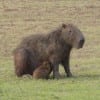 by Jim Stevenson,
by Jim Stevenson,
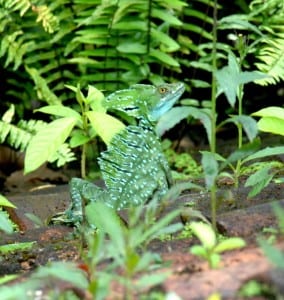
It is really amazing to me when reptiles and amphibians become tame in “the wild.” This male lizard has become quite unwary and he and his lady visit the bananas at the hotel once a day. Spots are tiny ruptive marks which help creatures hide. Curious how my van doesn’t hide very well.
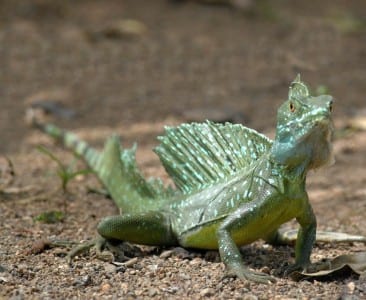
Here’s the female, taking an extra long look at me. The fins of the dorsum aid in heat regulation, as well as a modest defense. I don’t believe they bite either (like the Green Iguana) but the fins can do a very professional job on the hands.

Here’s the female, taking an extra long look at me. The fins of the dorsum aid in heat regulation, as well as a modest defense. I don’t believe they bite either (like the Green Iguana) but the fins can do a very professional job on the hands.
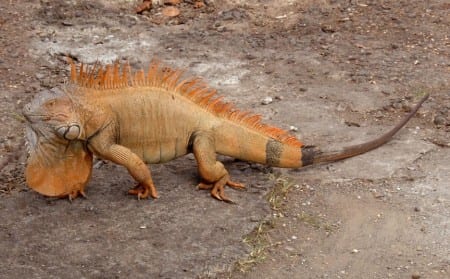
The male Green Iguana attains breeding colors and is quite the showy creature. This one’s tail broke off in the past and has grown back fairly well. This one is well in excess of four feet. You can even see three of them…
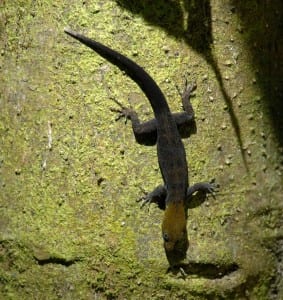
There are over 3000 species of lizards worldwide, with the vast majority being in the Tropics (by contrast, around 2000 snakes). Their toes are amazing climbing tools and I believe this round pupil eye indicates a diurnal species.
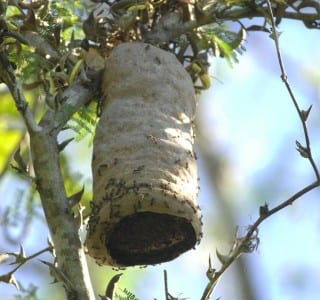
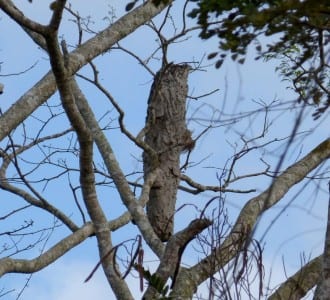
This surely must be the Holy Grail of wasp nests, as it was over six feet long. And though they have little waspitality, some vertebrates find easy meals by hawking them as they fly in and out.
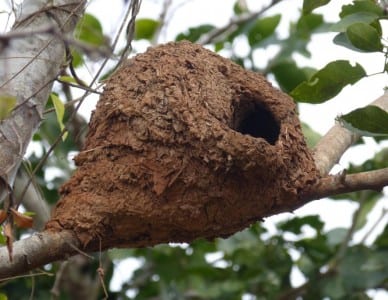
This is the nest of the Pale-legged Hornero, a beautiful, rich-brown bird of low, wet areas. Obviously, the nest was put together with mud and plant material, which saves on vacuuming.
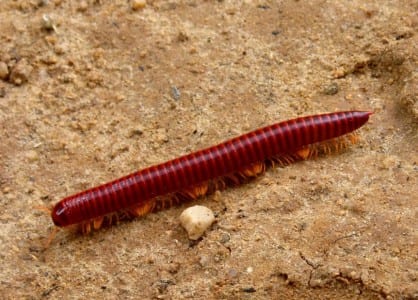
Most of the million or so species of arthropods live in the Tropics, with this millipede on the prowl for kibbles and bits. Millipedes are harmless, defending themselves with a hard exoskeleton, a pungent repugnatorial gland up front and the ability to roll up in a ball. Centipedes are a very different group, with one pair of (longer) legs per somite (segment) (reaching out to the side), a flatter body, and the ability to bite the @#$% out of you (as I have learned and reinforced in my *now* long life.)
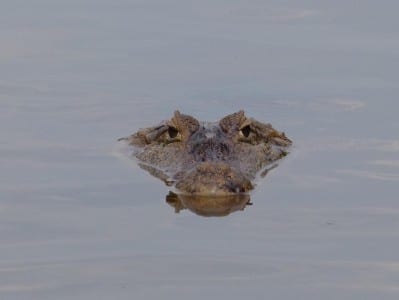
Oftentimes one sees only the head of a crocodilian, and for some animals, it’s the last thing they ever see. The high ridges between the eyes that gives the Spectacled Caiman its name may be seen most easily from the front.
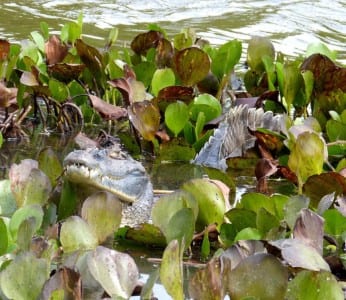
Up close you can see that being harmless to man doesn’t mean they look like pussycats. Much of their diet consists of crunched turtles, giving them the blunt teeth you see. As mentioned before, the high ridges between the eyes give them the name, “Spectacled” Caiman.
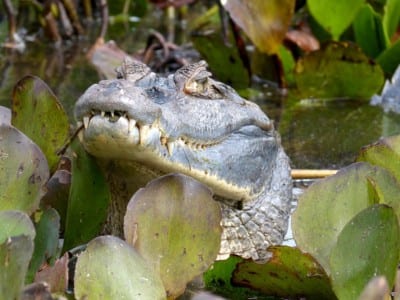
Spectacled Caiman are small members of their group, with caimen being one of four groups of crocodilians in the World. These are quite harmless, although the Black Caiman further south has been reported to occasionally be aggressive. Having swum with that species in Peru (Lake Lemoncocia), I reserve judgment.
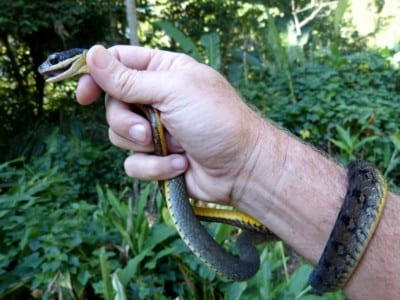
Some of us just can’t stay away from reptiles – especially ones without legs. This Masked Racer was hiding at the top of Rancho Grande in Henry Pittier National Park – right on the cliff. When he took off, so did I! Taking care not to plunge straight down, I grabbed the scaly beast and ran my hand up behind its head. For you experts, notice how much his aft looks like the pattern and color of a fer-de-lance! Wow, is that mimicry?!?
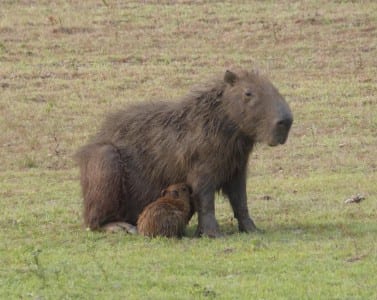
Mammals are named for their milk-producing glands, although they don’t seem to add to this creature’s attractiveness like, well, never mind. This is mother Capybara and her pint-sized pup, the largest rodent in the World. Anaconda food. 😉 One of the hardest mammals to spot is the sloth, but I knew this couldn’t just be a mass of leaves! There are two species of New World sloths, the Two- and Three-toed Sloth. Can you tell from this pictures which it is?
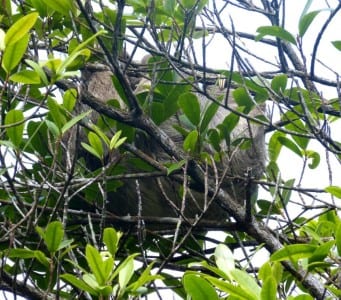
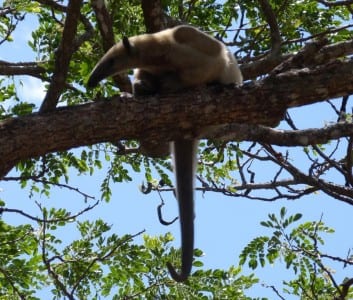
One I was very excited about was this anteater we kind of trapped on an overhead limb. Note the long, prehensile tail for balance and climbing and the long snout for sucking up ants and termites. It amazes me they can rip open rock-hard, aerial termite nests.
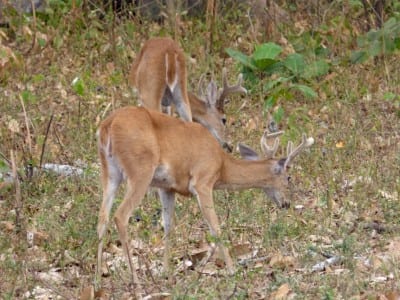
Deer are very common in El Cedral where they are not shot. These are two young bucks out of over 100 we saw on this drive. The difference between antlers and horns is that one continues to grow attached while the others fall off annually. And speaking of mammals…
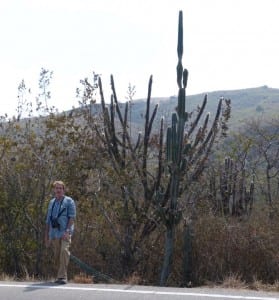
My dear Orlando friend Bruce Anderson is a mammal, not a reptile, nor especially (thankfully) a Florida Gator. His amazing zeal for ornithology made his ten-day company a joy, despite his curious love of cactuses. Cacti? He’ll correct me, I’m sure.

 Posted in
Posted in 

























I’m curious to find out what blog system you have been
utilizing? I’m having some minor security problems with my latest site and I would like tto find something more safe.
Do you have any solutions?